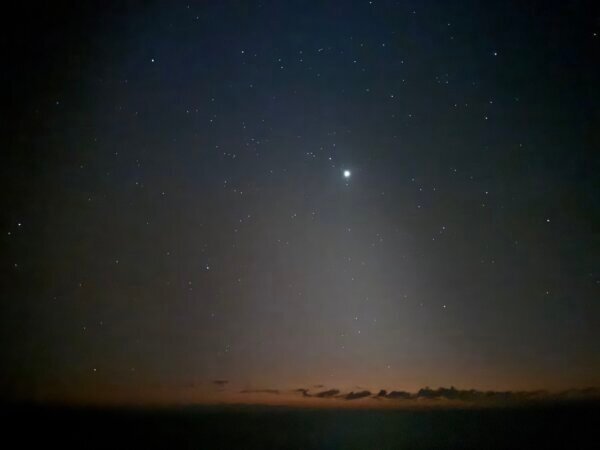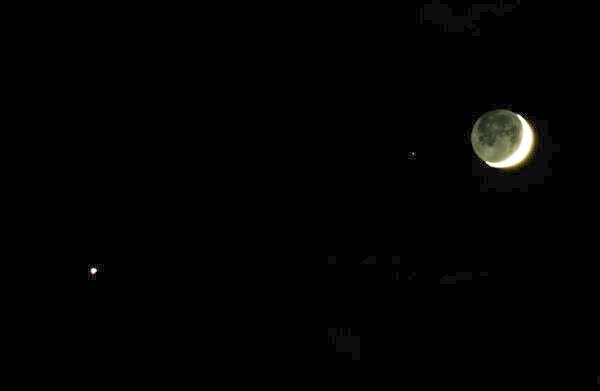February 2025 offers a celestial feast for stargazers, with a series of captivating planetary alignments and lunar events. Here’s a guide to the month’s must-see astronomical phenomena:
Evening Constellations
As night falls, the winter sky showcases its brilliant constellations. Take a moment to identify Orion the Hunter, Taurus the Bull, and Gemini the Twins. Their prominent stars and patterns make them relatively easy to spot.
Key Dates and Events
- February 1: At dusk, look southwest to witness a stunning pairing of the young waxing crescent moon and the radiant Venus. The phenomenon of earthshine may be visible on the moon’s surface, adding to the spectacle. Saturn will be positioned about a fist’s width below this duo.
- February 5: The Pleiades Star Cluster will be closely accompanied by the waxing gibbous moon. For an enhanced view, especially of the cluster’s individual stars, using binoculars is recommended.
- February 9: After sunset, observe the eastern sky to see Mars, the waxing gibbous moon, and the star Castor forming an impressive isosceles triangle.
- February 14: Venus reaches its peak brightness in the southwest, boasting an apparent magnitude of -4.9. In areas with minimal light pollution, it’s possible to see your shadow cast by Venus’s glow. Detailed guides are available online for those interested in experiencing this rare phenomenon.
- Mid-February: In dark sky locations, look westward after sunset to observe the zodiacal light—a faint, triangular glow extending up from the horizon. With Venus situated within this glow, the scene offers both visual and photographic opportunities. For best results, use a tripod-mounted camera for time exposures of several seconds.
- February 17: In the pre-dawn southwestern sky, the waning gibbous moon will appear very close to the bright star Spica. Binoculars can enhance this view.
- February 21: Before dawn in the southeast, the waning crescent moon will be near the red supergiant star Antares, offering a striking visual contrast.
- February 24-25: At sunset, Mercury and Saturn will have a close encounter low in the western sky. A clear horizon is essential for viewing, as they will be situated in bright twilight. Use Venus as a reference point; look directly down toward the horizon around 6:30 p.m., with Mercury appearing to the right. Binoculars will greatly aid in spotting this pairing.

Lunar Phases
- February 5: First Quarter Moon
- February 12: Full Moon, traditionally known as the Snow Full Moon.
- February 20: Last Quarter Moon
- February 28: New Moon
Planetary Positions
- Mercury: Initially visible low in the southeast about an hour before sunrise; binoculars are helpful due to its proximity to the horizon. By month’s end, Mercury transitions to the evening sky, pairing with Saturn.
- Venus: Dominates the southwestern sky after sunset, shining brilliantly and unmistakably.
- Mars: Visible in the eastern sky post-sunset, though it has dimmed compared to previous months. A small telescope may reveal surface features; online tools can assist in identifying them.
- Jupiter: Shines brightly high in the sky, surpassed in brightness only by the moon and Venus. Through 7×50 binoculars, observers can spot Jupiter’s four main moons appearing as aligned “stars.” A small telescope can reveal atmospheric details.
- Saturn: Located low in the southwestern sky at dusk. A small telescope will show Saturn’s rings, which are currently nearly edge-on—a rare and captivating sight.
- Uranus: Can be located with binoculars using an online star chart. In small telescopes, its distinct color becomes apparent.
- Neptune: Requires a telescope for viewing, but its deep blue hue makes the effort worthwhile.
- Pluto: Situated at the far reaches of our solar system, observing Pluto necessitates capturing images through a telescope over consecutive nights to detect its movement.
For those seeking optimal stargazing experiences, consider visiting designated dark-sky areas. These locations offer minimal light pollution, enhancing the visibility of celestial events. For instance, the Cambrian Mountains in Britain boast several Dark Sky Discovery Sites, providing excellent opportunities for observing the night sky.
Remember, the key to a rewarding stargazing session is patience and preparation. Check local weather conditions, find a dark location away from city lights, and allow time for your eyes to adjust to the darkness. Happy observing!









